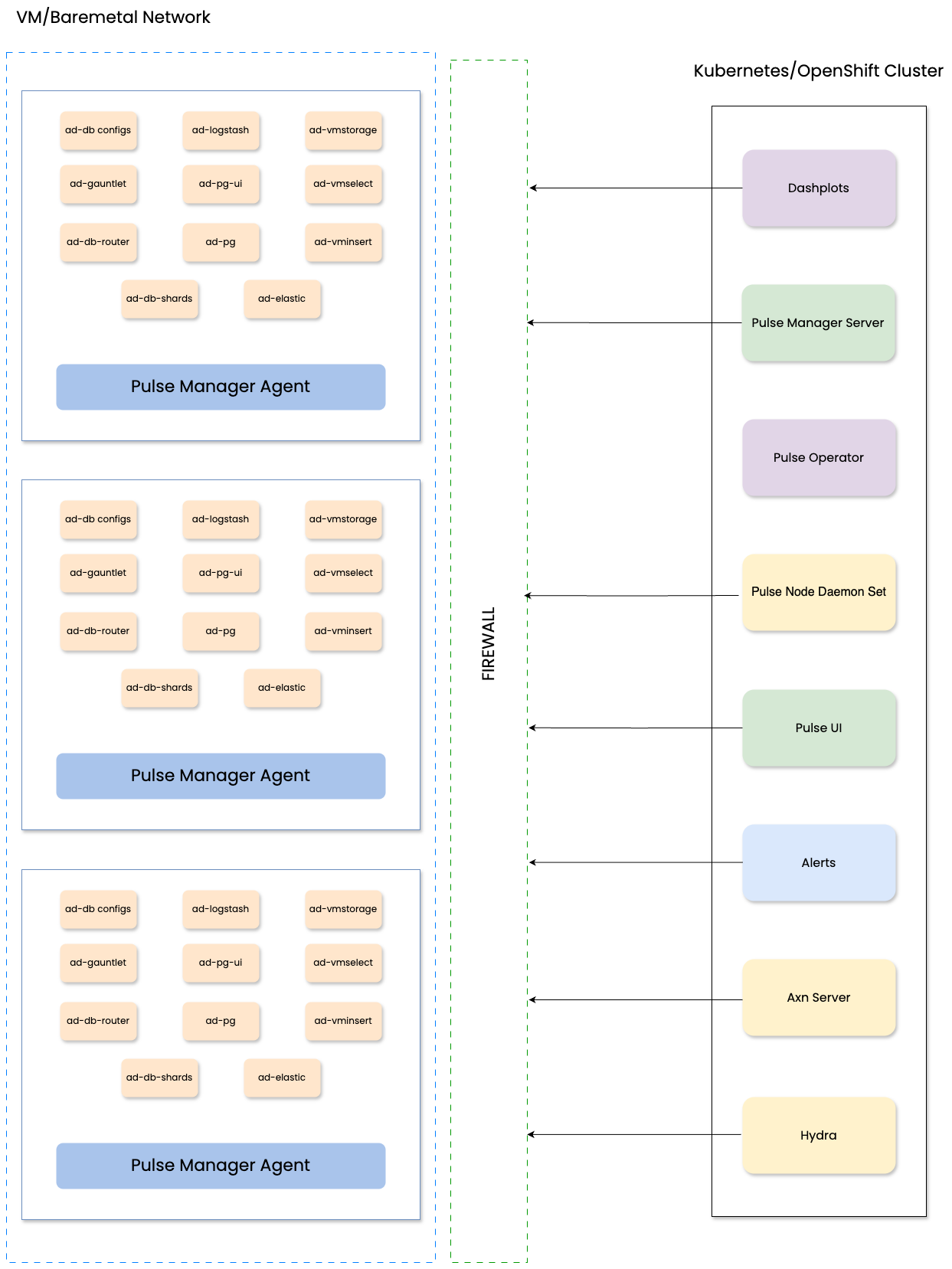Network Port Requirements
To ensure the proper functioning of Pulse on a Kubernetes cluster, the ports need to be opened and accessible. The ports facilitate communication between various Pulse components, services, and external clients.
The image illustrates the architecture for connections.

Database Ports
Internal ports are used by Pulse services for inter-service communication, especially when deployed in a multi-node setup where these ports need to be accessible across all Pulse-hosted nodes.
External ports, on the other hand, are accessed by users or services outside of the Pulse-hosted environment to enable external connectivity.
| DB Service Name | Port | Outbound/Inbound | Protocol |
|---|---|---|---|
| ad-db-router | 27017 | External | TCP |
| ad-db-shards | 27018 | Internal | TCP |
| ad-db-configs | 27019 | Internal | TCP |
| ad-vminsert | 19043 | External | HTTP |
| ad-vmselect | 19042 | External | HTTP |
| ad-pg | 19067 | External | TCP |
| ad-pg-ui | 19068 | External | TCP |
| ad-events | 19009 | External | TCP |
| ad-events | 19008 | Internal | TCP |
| ad-logstash | 19012,19051 | External | TCP |
| ad-elastic | 19013 | External | TCP |
| ad-elastic | 19014 | Internal | TCP |
Kubernetes Ports
Pulse services also need to be exposed to the outside, and the list is below.
| Pulse Service Name | Port | Internal/External |
|---|---|---|
| ad-pulse-ui | 4100,4101 | External |
| ad-graphql | 4000,4001 | External |
| ad-streaming | 19005 | External |
| ad-hydra | 19042 | External |
| ad-axnserver | 19999 | External |
| accelo-manager | 20001 | External |
Was this page helpful?